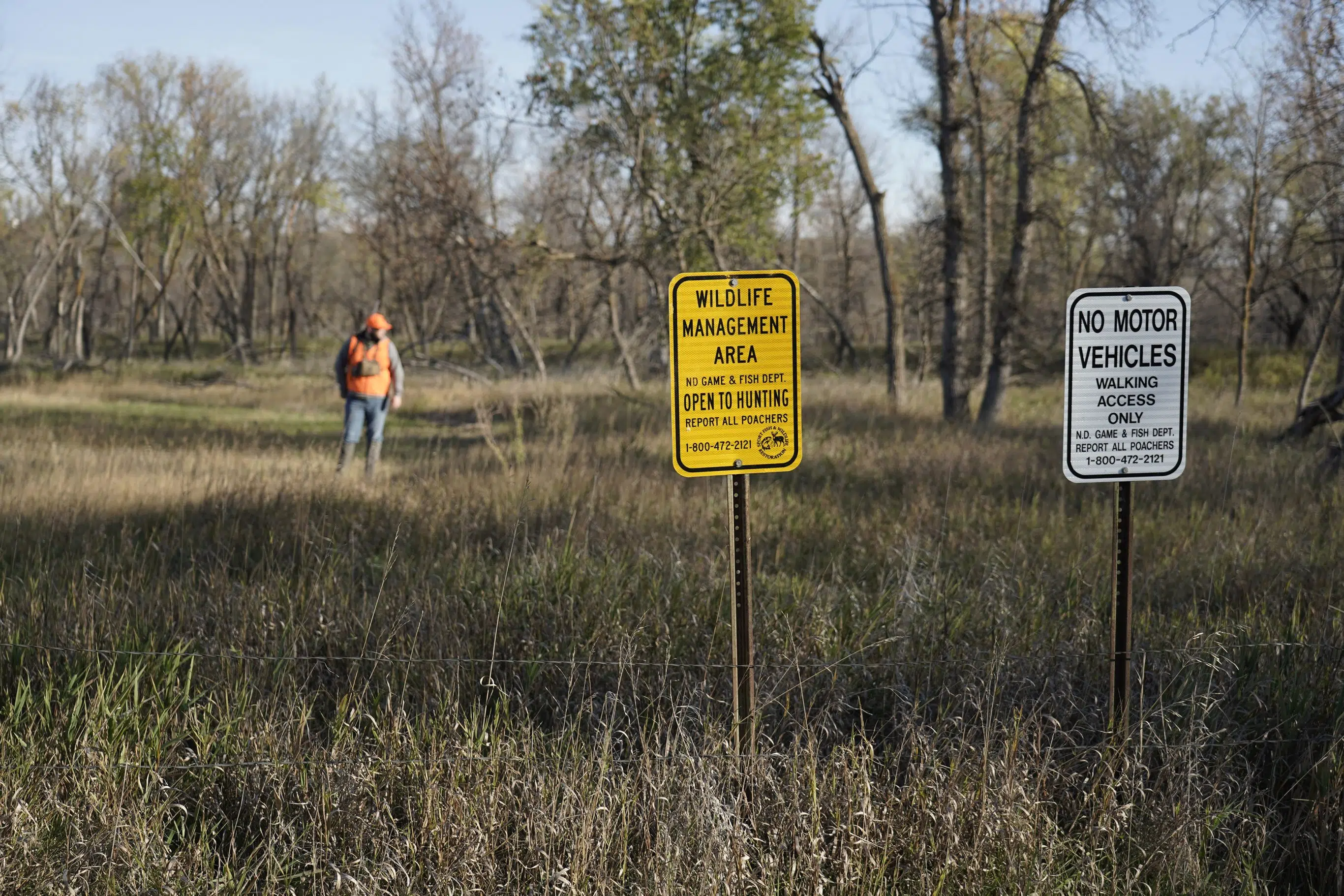By Doug Leier
August means the early Canada goose season and the beginning of the 2023 hunting seasons. Part of the process is looking for places to hunt from the first geese to ducks, deer, pheasants and grouse.
Did you know about 93% of the land in North Dakota is privately owned? It’s no wonder in this society where if we can shave off a few seconds off a drive or chore we’ll often head for the path of less time spent on the journey giving us more time at the destination.
The Private Land Open To Sportsmen program and associated maps have made it easier for a hunter to find a piece of open hunting land. A hunter can legitimately wake up and travel to any corner or county in the state and be assured of walk-in hunting access. It’s been a successful program, but the intent was never to be everything to all hunters. These are private lands and can consist of many different land practices decided by the landowner with an agreement from the Department to provide hunters access.
Don’t lose sight of how important it is to understand the private landowner is making the decisions for cropping, grazing or other land use.
A foundation of hunting access and habitat are the Game and Fish Department owned and managed properties such as wildlife management areas.
These owned or managed wildlife management areas also play an important role in not only providing public access but quality habitat to foster and safeguard those animals hunters ardently pursue.
With increased hunting activity on WMAs around the state in coming weeks, hunters are reminded all equipment, such as tree stands, trail cameras and ground blinds, must be identified with either your name, address and phone number, or an equipment identification number that you can get through the Game and Fish Department’s website.
North Dakota has more than 220 wildlife management areas, totaling more than 200,000 acres.
While those numbers may not seem like a lot to some – down from the Department’s roughly 800,000 Private Land Open To Sportsmen acres and an untold number of federally managed waterfowl production acres, for instance – I’d argue for the importance of every single acre providing a place for many people to hunt.
Dan Halstead, Game and Fish Department wildlife resource management supervisor, explains the WMA program mission: “These are areas that we manage for wildlife habitat, that’s the primary purpose. They also are there to enhance wildlife production in those local areas. And so, we’re trying to provide habitat for wildlife, produce more wildlife in that area for people to hunt. And so, they’re public areas that people can go out and hunt on. In some cases, there’s also fishing involved. So, in cases where there’s a river or a lake there, then there’s some fishing opportunities at those areas.”
Not only will hunters see size differences in the many WMAs, but also differing land management practices.
“We concentrate on prescribed burning, haying and grazing,” Halstead said. ”We’ve kind of found over the years that it’s really important in these grassland ecosystems that you have some kind of disturbance.”
There are other types of disturbances, such as littering, that Game and Fish staff have little time for.
“We spend a lot of our time trying to manage the habitat on these areas and, so, we don’t have a lot of time to be picking up trash,” Halstead said. “And it seems like the areas where people like to camp, that’s where the trash is associated. And so, we basically run our WMAs as pack in, pack out.”
This leave no trace mentality is one hunters should employ on all lands, PLOTS and others, when visiting during North Dakota’s hunting seasons.
Stay safe, obey the rules and enjoy North Dakota’s great outdoors.





